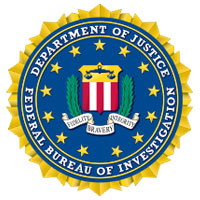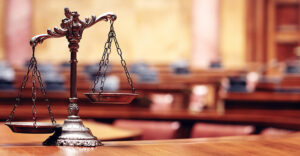
Sen. Ron Wyden, D-Ore., and Sen. Dean Heller, R-Nev., on Wednesday introduced the Protecting Individuals From Mass Aerial Surveillance Act, which would require federal government agents to get a warrant before snooping from the sky.
“Americans’ privacy rights shouldn’t stop at the treetops,” Wyden said.
The issue came to a head following the revelation earlier this month that the Federal Bureau of Investigation was using spy planes to engage in undercover surveillance activities across the United States.
The FBI set up fake companies as a cover for its aerial surveillance operations, the Associated Press reported.
The AP traced at least 50 aircraft belonging to the FBI and identified more than 100 flights since late April, covering parts of Houston, Phoenix, Seattle, Chicago, Boston, Minneapolis and southern California. In all, the FBI conducted aerial surveillance of citizens in 11 states as well as the District of California.
Most of the planes flew counterclockwise about one mile above ground and in orbits several miles wide at slow speeds.
The FBI used at least 13 shell companies, including FVX Research, KQM Aviation, NBR Aviation and PXW Services, as fronts for its aerial surveillance.
The companies are registered to post office boxes in Bristow, Virginia, which is close to a regional airport. Only one of the companies appeared in state business records, the AP said.
Buzz Off, Austin Powers!
Most of the aircraft registrations list “Robert Lindley” as chief executive. The name is signed with at least three different signatures. Further, two documents pertaining to the planes include signatures of “Robert Taylor” that bear a striking resemblance to one of Lindley’s signatures, the AP said.
The FBI has not disclosed information about its surveillance flights in court documents, and the flights are conducted without warrants, according to the AP.
Details about the FBI’s aviation operations were redacted in the U.S. Department of Justice Inspector General’s March 2012 report of an audit of the FBI’s aviation operations. The redactions were implemented at the FBI’s request on national security grounds.
Nevertheless, the FBI’s aviation program “is not secret,” bureau spokesperson Christopher Allen told the E-Commerce Times via a canned statement. Their capabilities “are protected for operational security purposes.”
The FBI “routinely uses aviation assets in support of predicated investigations targeting specific individuals,” he continued, adding that the aircraft “are not equipped, designed, or used for bulk collection activities or mass surveillance.”
All tools and equipment are used, and all investigations conducted, in accordance with the Attorney General’s guidelines and the FBI’s Domestic Investigations and Operations Guide, Allen maintained.
No Willing Suspension of Disbelief
Those arguments don’t cut any ice with privacy advocates.
“We think a warrant should be required for this kind of surveillance,” said Hanni Fakhoury, a senior staff attorney with the Electronic Frontier Foundation.
What’s needed are “sensible use guidelines, so that this form of aerial surveillance isn’t targeted towards low income or minority communities, or individuals engaging in First Amendment-protected activity,” he told the E-Commerce Times.
There may be valid grounds for skepticism. The FBI reportedly has purchased DRT boxes, which gather cellphones’ IMSI numbers, as well as geolocation data from all cellphones within their range.
DRT boxes also are used by the NSA’s Boundless Informant tool and in surveillance planes used by the U.S. Marshals service to overfly cities in the U.S.
It’s difficult to buy the argument that bulk data collection and mass surveillance are not involved.
Aerial Surveillance and the Law
The FBI isn’t breaking any laws — the U.S. Supreme Court ruled in three cases in 1986 that aerial surveillance doesn’t require a warrant and doesn’t violate people’s Fourth Amendment rights.
However, the Court “reserved the right to consider situations in the future where airplanes were equipped with other sophisticated equipment, [such as] cameras that would enable mass surveillance,” Fakhoury pointed out.
The powerful new technologies on these spy planes “require a reexamination of those earlier cases,” Fakhoury urged.
Congress Steps In
That may not be necessary if the latest bipartisan effort to curb governmental spying on citizens should succeed.
The Wyden-Heller bill would require warrants for federal government aerial surveillance by both manned and unmanned aircraft — i.e., drones. Any information collected without proper authority would be inadmissible in court.
Further, it would bar the government from identifying individuals who weren’t targeted in surveillance operations, except in instances of probable cause that they were engaged in criminal activity.
The bill would prohibit the government from hiring private operators to conduct surveillance that it was not authorized to carry out.
The bill makes various exceptions, including for border patrol, government research and disaster relief. It would not affect commercial operations, or state and local law enforcement activities.




















































